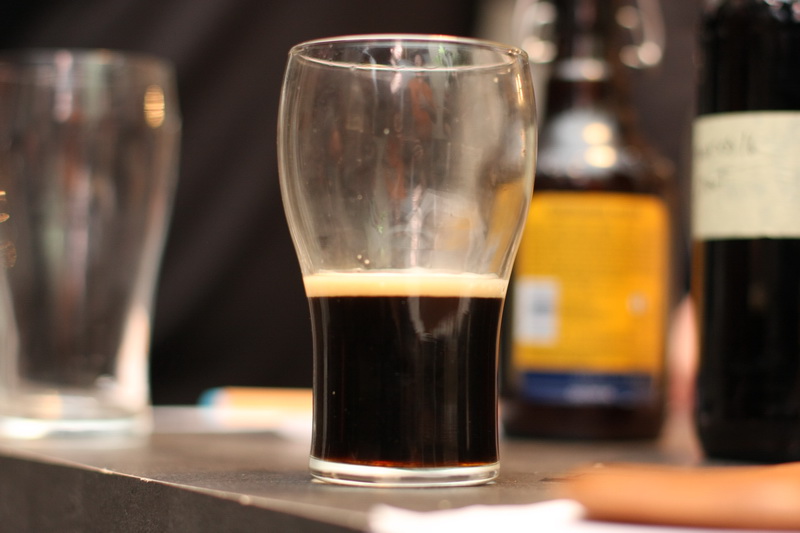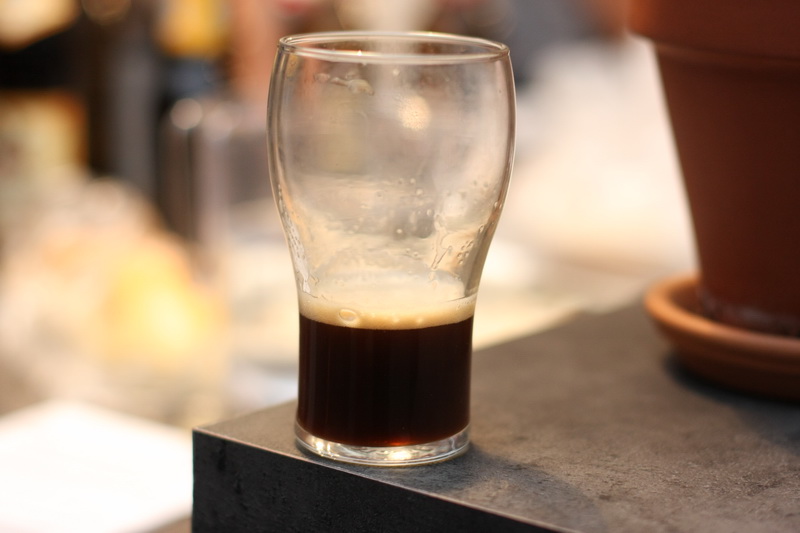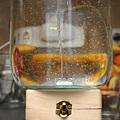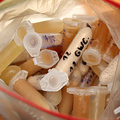Brewed this stout on the 15th of February as part of the International Homebrew Project 2015 organised by Velky Al of Fuggled.net.
This year’s recipe was the Truman Double Stout dated from 1860. The details of the recipe is from the book of The Home Brewer’s Guide To Vintage Beer by Ron Pattinson - great book by the way.
Brewday
Tons of brown malt, tons of hops and high mashing temp...crazy looking recipe. I will like it!
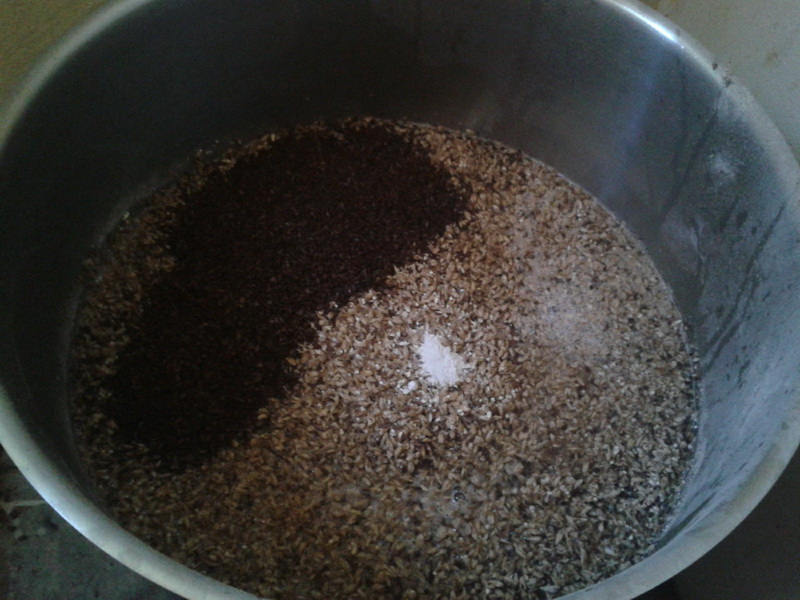
Recipe:
(70% efficiency)
17 L batch
OG: 1.079
IBU: 130.6
SRM: 31.5
Mash
5100 g Maris Otter - 81.3%
1000 g Brown - 15.9%
170g Black Patent - 2.7%
35 °C for 15 min
52 °C for 30 min
73 °C for 60 min
77 °C for 10 min
Sparge
with 79 °C water
Boil
55 g EKG (6.4% AA) - 90 min
55 g EKG (6.4% AA) - 60 min
41 g EKG (6.4% AA) - 30 min
1 pck Safale S-04
London Porter Water Profile
Fermentation schedule: 4 days at 16 °C, then ramp up to 22 °C (2 °C / day)
Brewday went well, except it was bloody cold outside and in my brewcave, therefore the mash had to be reheated a few times to maintain the 73 °C. Mash temp went up and down a bit but it was around 73(ish) to favour the alpha-amylase. All three brewer - who brewed in Hungary - substituted Golding to East Kent Golding hitting the original IBU.
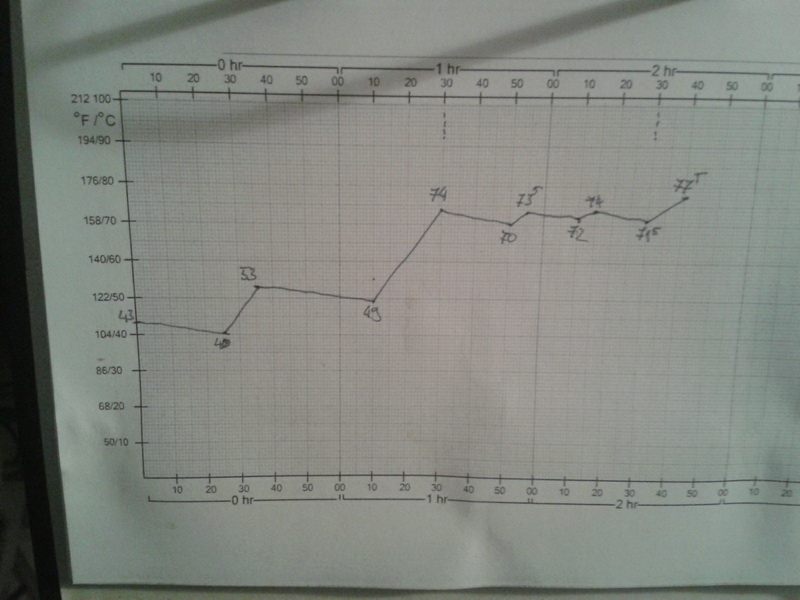
I hit the OG (1.079) with 17 Litre wort in the fermenter. Set the fridge to 16°C. The next morning it bubbled away nicely, but in the evening...the top of the 20L fermenter was open. The CO2 hose couldn’t keep up the speed of fermentation. Bit too much liquor in a small bucket...anyways the yeast looked healthy.
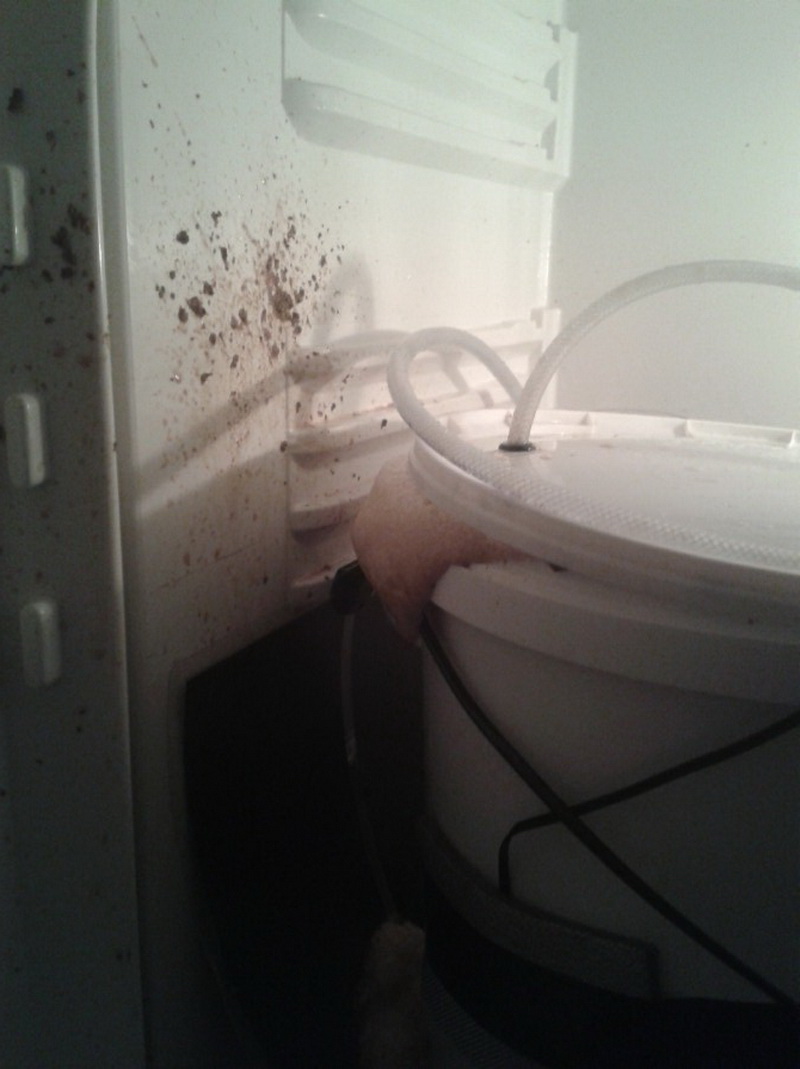

I kept the temperature for 4 days. and slowly ramped up to 22°C to let it ferment out.
First measurement after 2 weeks. 1.035...dissapointed. Huge yeast cake, ended up with 15L beer.
I decided to rack it to secondary for 2 more weeks, hoping that it will ferment out even more.
I split the batch into two parts. P1 was simply racked, purged with CO2 and closed. P2 got 4g/litre medium toasted hungarian oak cubes. The cubes weren’t steamed nor soaked in alcohol, just droppen in the beer. It may bring the taste of the beer closer to the 1860-ish aging techniques although this beer needs to be aged in bottles for a long time to round up the flavours.
14.03.2015
Bottled the P1 (without the oak) with 5g/liter corn sugar to get 2.0 volume of CO2. OG went down a bit, standing at 1.033, meaning 58.3% attenuation. I do hope it’s due to the high mashing temperature and not a stucked fermentation.
29.03.2015
P2 has been kept 2 more weeks in the secondary with the oak cubes.
Finish exactly where P1 (1.033), hope it will get some oaky influence and will round it more during maturation. Will see in a few months.
Tasting
2 weeks in bottle before first Club day (Club meeting on the 1st of April...no joke!), tasting with the brew mates who made the same recipe - and many more...
Appearance
Clear, dark, almost black with some brownish tones. Pour comes with very small off-white head with brownish tones. The head retention is poor but some lacing lasts.
The other sample (S2 - made by Almos) - same grainbill, same hopbill, same yeast, fermented also at 16°C, finished at 1.035 - was much browner, murkier, due to bottled 1 week before sampling. Head was a bit foamier, with better retention.
The third sample (S3-made by Andras) was the cleanest, with the biggest, lasting head - bottled 3 weeks ago. I need to mention that S3 used everything as per recipe but the yeast. He used Nottingham yeast, fermented around 20°C. His beer finished at 1.016...way lower then the other two.
Aroma
Malt forward, some caramel, coffee, dark chocolate, dried dark fruits, touch of smoke, slight hop aroma and some noted acetaldehyde.
S2 was similar but without smoke nor acetaldehyde, although some acidity was spotted. Smelled more chockolate, porter-like.
S3 Smelled chokolatey, some coffee, bit of ester.
Flavour
Creamy espresso, dark bitter chocolate, quite bitter with flowery-earthy tones. Maybe some phenol. The sweetness balances the hops to almost even, but the roasted malts give some acidity to it. I do think it will smoothen out with time.
S2 felt more hop-forward, more chocolaty. The hop gives a great balance at first sip and gets more prominent at the end. Some acidity.
Mouthfeel
Full, creamy texture, like a well made ristretto although still little harsh. Carbonation is about right (2.0 levels of CO2).
S2 has sligtly less body (maybe due to acidity?).
S3 felt more bitter and watery than the other two (maybe due to lower final gravity).
Overall
Surprisingly great brew with the residual sugar and tons of hops in it, easy to drink. It will benefit half a year/a year of bottle conditioning, for sure. Definitely would brew it again. Definitely will do side by side tastings again.

